BOSTON – Welcome to Boston Logan International Airport (BOS). This afternoon, I am returning to Madrid Barajas (MAD) with Iberia’s A321XLR and onwards to London Heathrow (LHR).
Iberia is the launch customer of the next-generation Airbus A321XLR, being the first airline in the world to operate transoceanic routes with the single-aisle aircraft. Capable of flying an Xtra Long Range of up to 4,700nm, the aircraft combines long-haul experiences with short-haul economics, defining a new era in the aviation industry.
IB currently flies to two US destinations with its flagship XLR, including Boston and Washington Dulles (IAD). The airline serves Boston twice daily; flight IB347 to BOS departs MAD at 1230, and flight IB345 at 1740. IB serves Washington up to seven times weekly as IB361 departing MAD at 1150, with its frequency changing seasonally.
Airport Experience
Located on the East Coast of the US, Boston Logan is one of the nation's busiest airports. Serving over 100 domestic and international destinations, BOS is New England’s gateway to adventure and business worldwide.
I arrived at BOS a little over two hours before departure, and headed to Iberia’s dedicated check-in area at Terminal E. All airlines operate from one of four passenger terminals: A, B, C and E, with the latter mainly handling international flights.
Iberia has multiple check-in counters for its business class and economy class customers, efficiently handling well over two hundred passengers on our flight. With no checked bags and a boarding pass in hand, I headed straight to security, where I had a brief passport check. The TSA operates all security checkpoints, and my first experiences were positive, being airside within minutes.
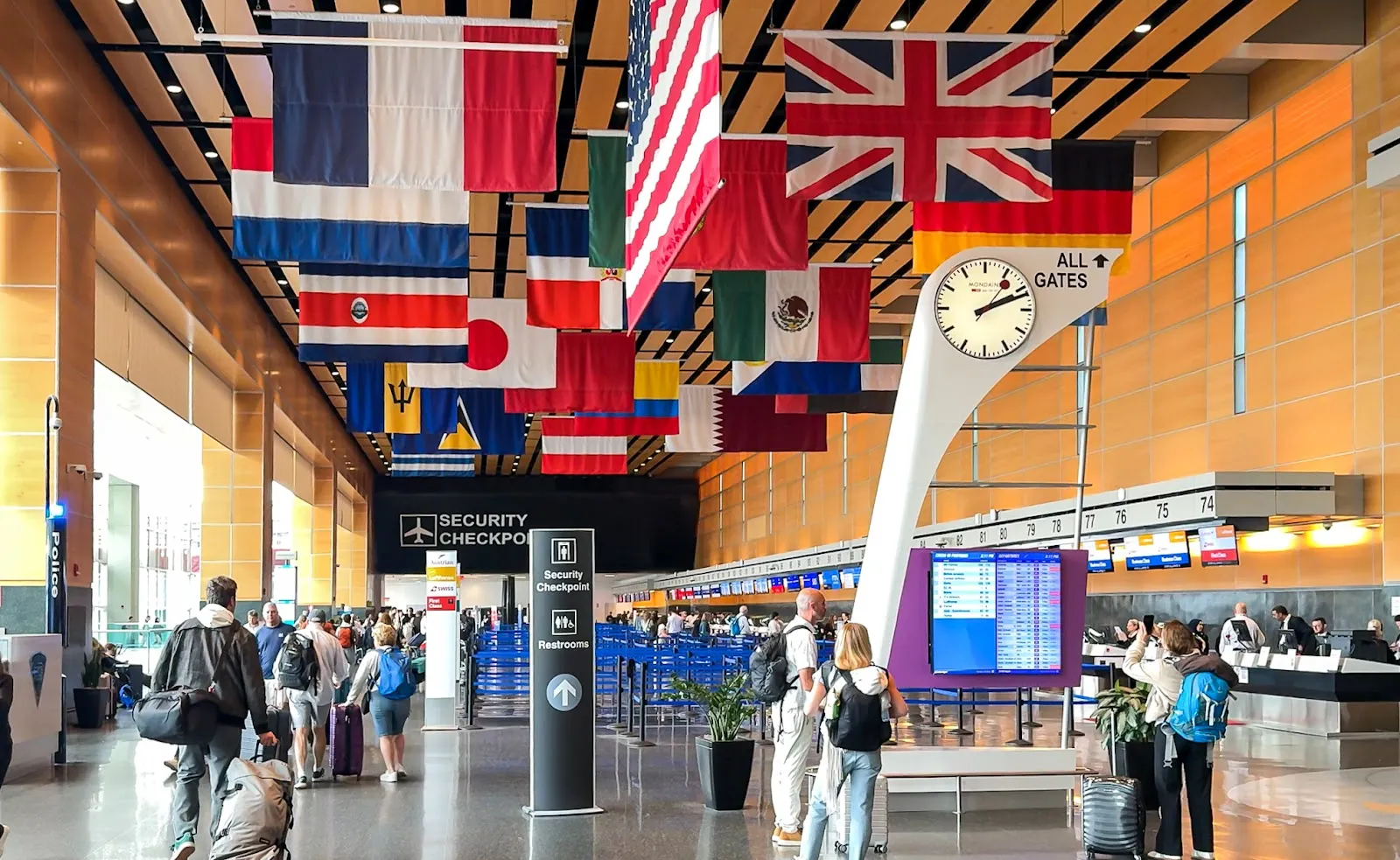
I explored the relatively small duty-free area before my attention turned to the huge glass windows, offering superb views of the ramp. After a quick walk to a nearby gate, I found myself releasing my inner avgeek, enjoying various aircraft movements across the airport.
A familiar sight soon came into view with its vibrant, eye-catching striped colours, none other than Germany’s holiday airline, Condor (DE). The A330neo in its striking ‘Blue Sea’ livery pulled into stand, completing its 8-hour flight from Frankfurt Airport (FRA). Other aircraft noted around the apron included multiple Delta (DL) widebodies, an Emirates (EK) Boeing 777 and an Air France (AF) Airbus A350 parked at a remote stand.
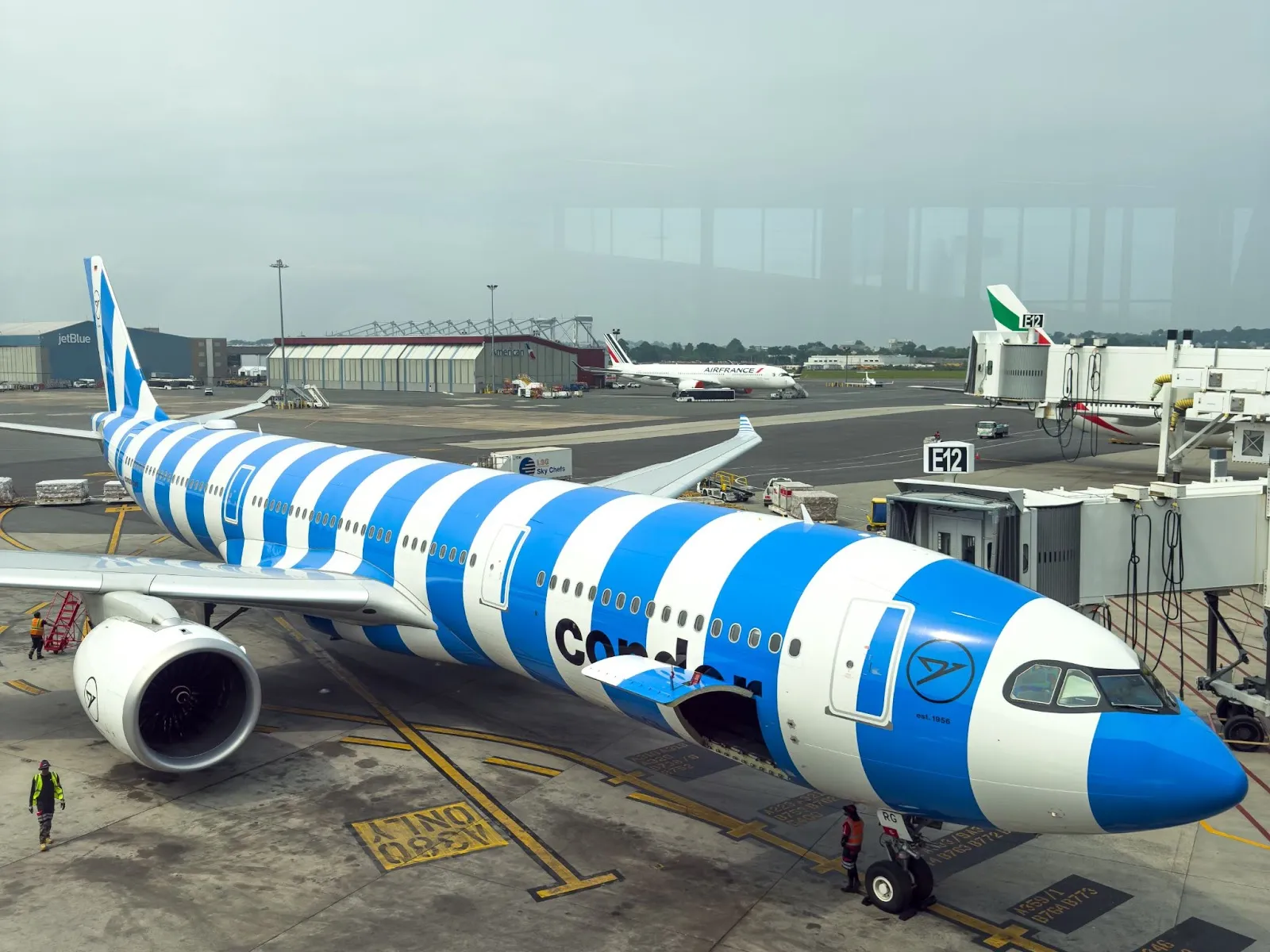
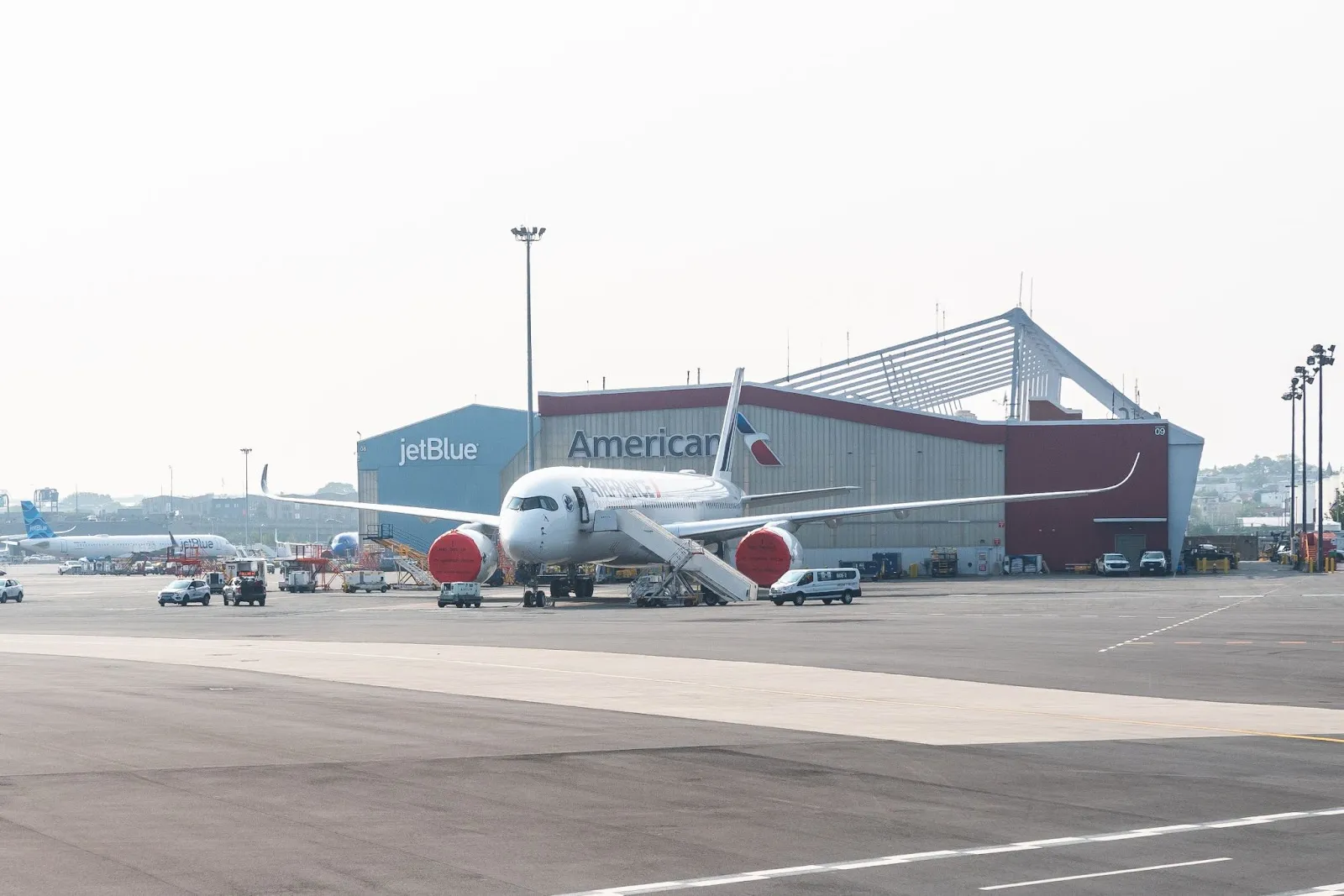
Welcome Aboard
This afternoon, we are flying onboard Iberia’s second A321XLR, registered EC-OLE. Our flight IB348 departs from gate E9, and I found myself a quiet spot by the window overlooking the ramp for yet more viewing pleasure of aircraft.
Boarding commenced around thirty minutes before departure, and boarding groups were enforced as standard. I was warmly welcomed onboard by the cabin crew and found my seat for the next 6 hours, 30F.
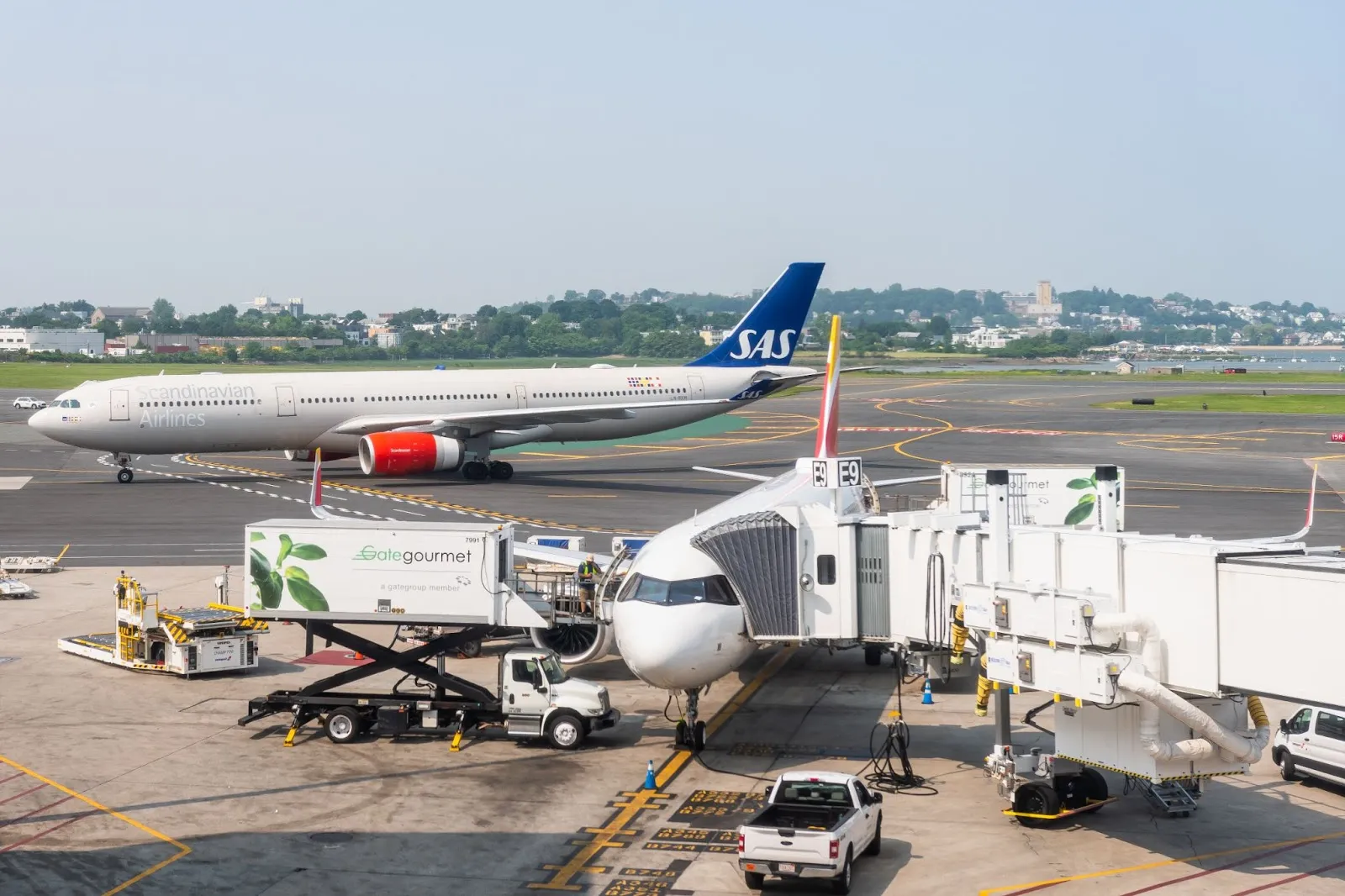
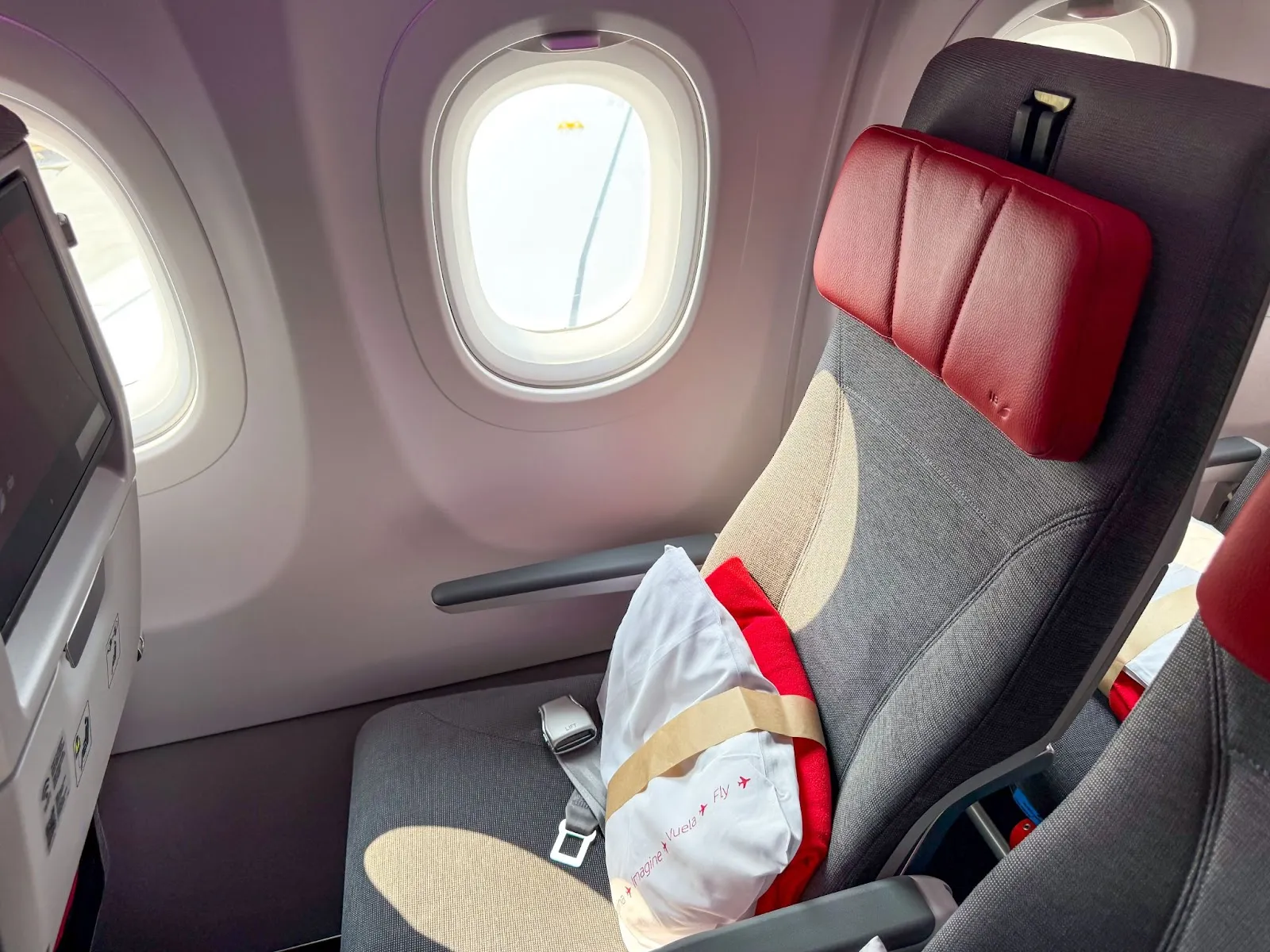
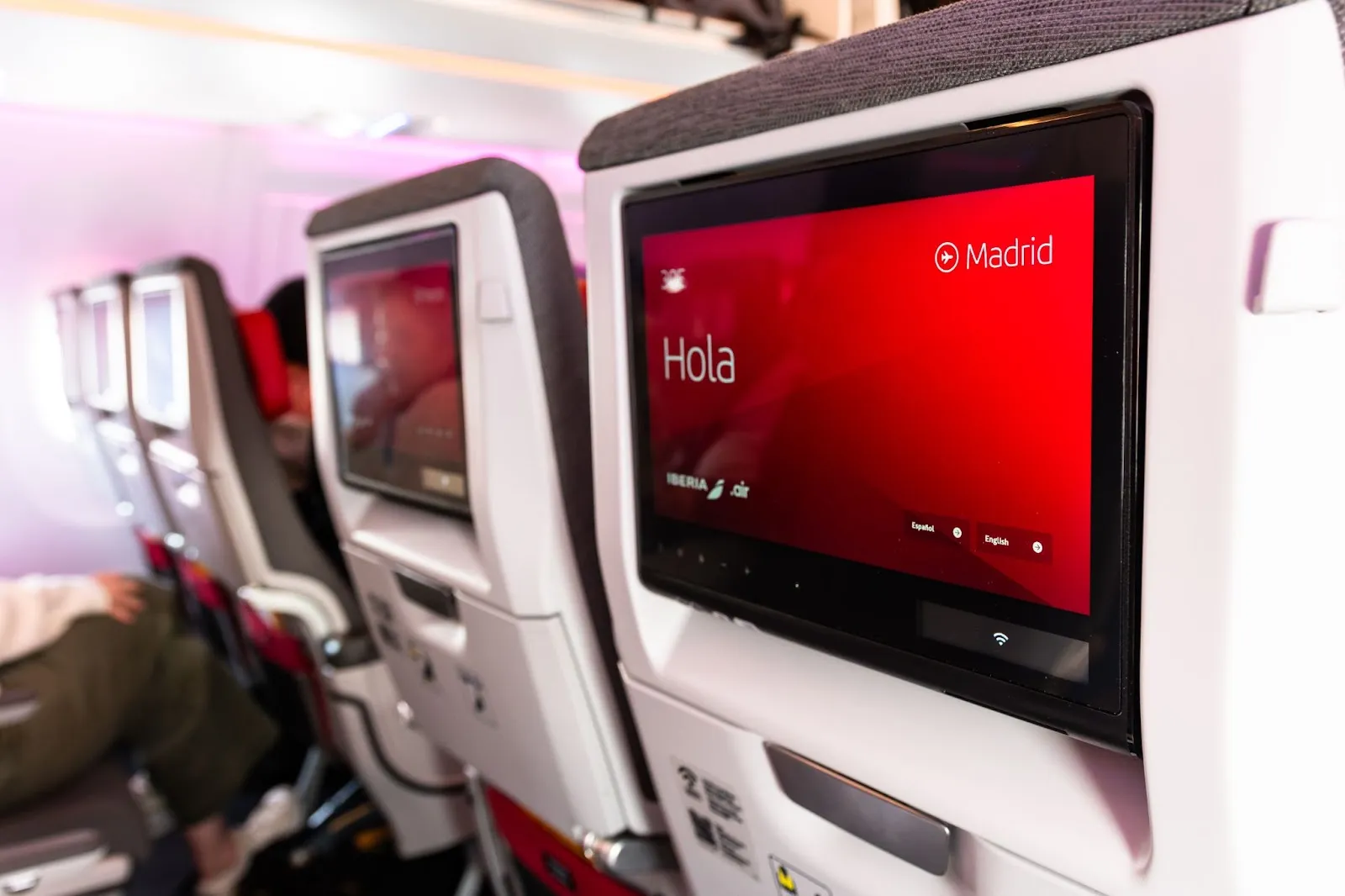
My first impression of the economy cabin was positive, and I began by familiarizing myself with the cabin. Provided to all passengers at their seat included a blanket and a pillow, as expected from a long-haul economy flight.
IB’s economy class accommodates 168 customers in a standard 3-3 seating configuration. Features include a six-way adjustable headrest, 4-inch recline, and a standard literature pocket with two additional compartments. In front of me, a personal 12-inch 4K in-flight entertainment screen, with a USB-A and USB-C port and headphone jack below.
Overhead was a standard panel for air-con, lighting, and a crew-call button. The edges of the cabin were lit with Iberia’s vibrant purple mood lighting, setting the scene for the flight ahead of us.
Taxi, Takeoff
Right on schedule, pushback occurred on time at 1630, and we started our engines thereafter. Taxiing to our departure runway 9, we passed various major international airlines, including Virgin Atlantic (VS), Swiss (LX) and Etihad Airways (EY). I also noticed the XLR’s older sibling, the A321LR, of Aer Lingus (EI) and Tap Portugal (TP), parked at their respective gates.
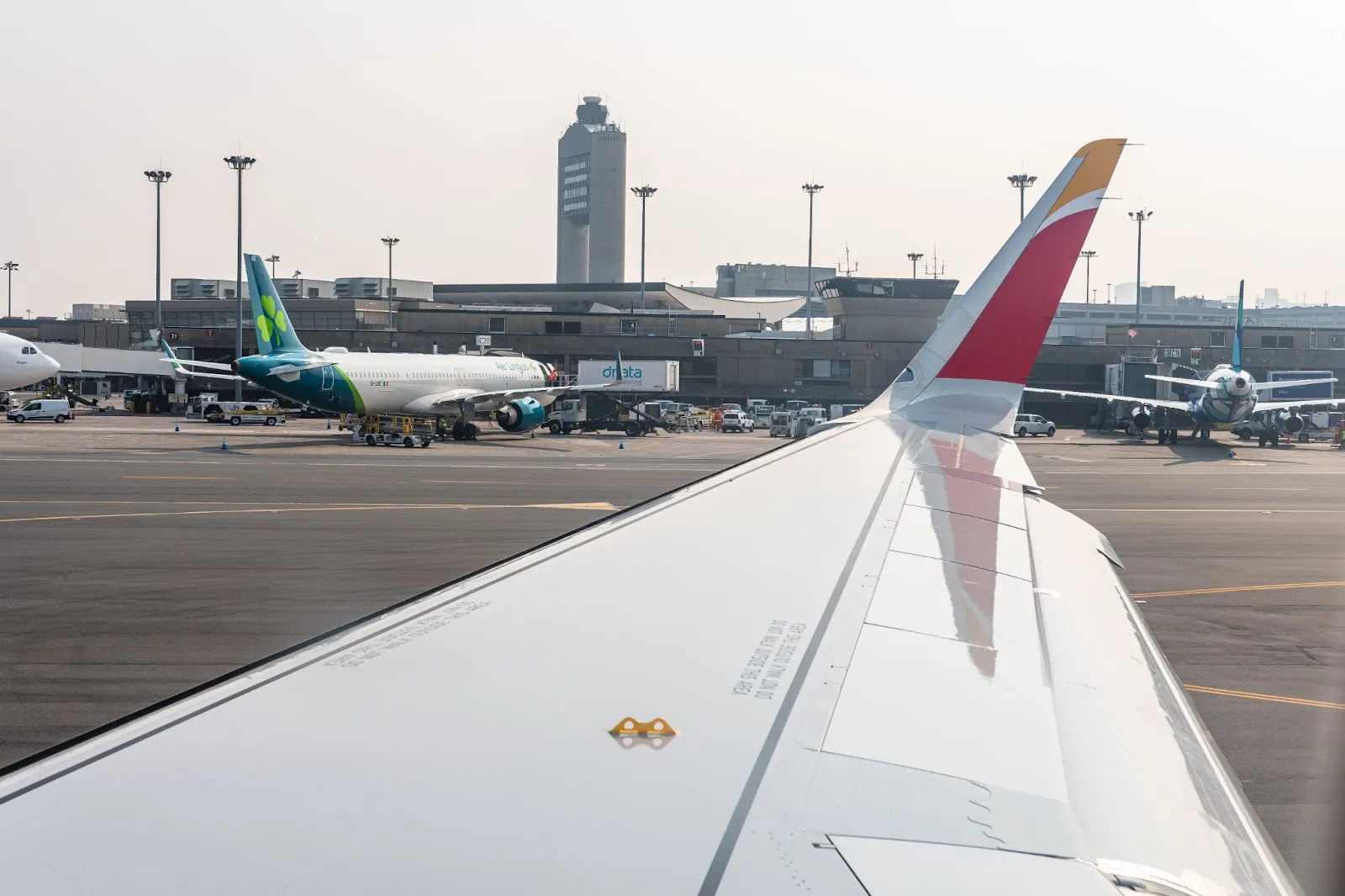
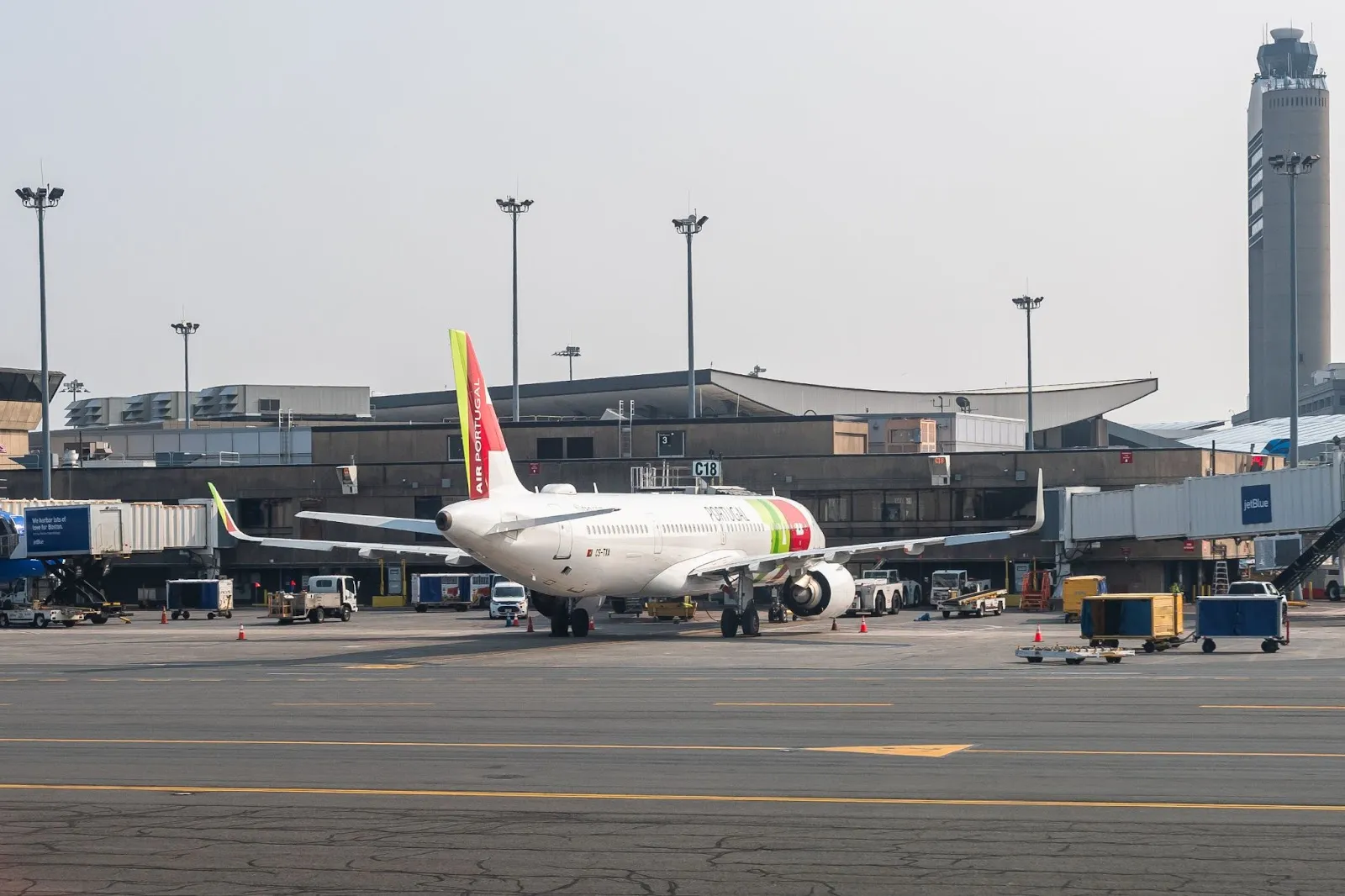
Lining up for departure on the southernmost runway, a smooth takeoff followed, with great views of Boston Harbour below. We quickly left the mainland behind us and set course towards Madrid, with what would be a relatively quick night across the Atlantic Ocean ahead.
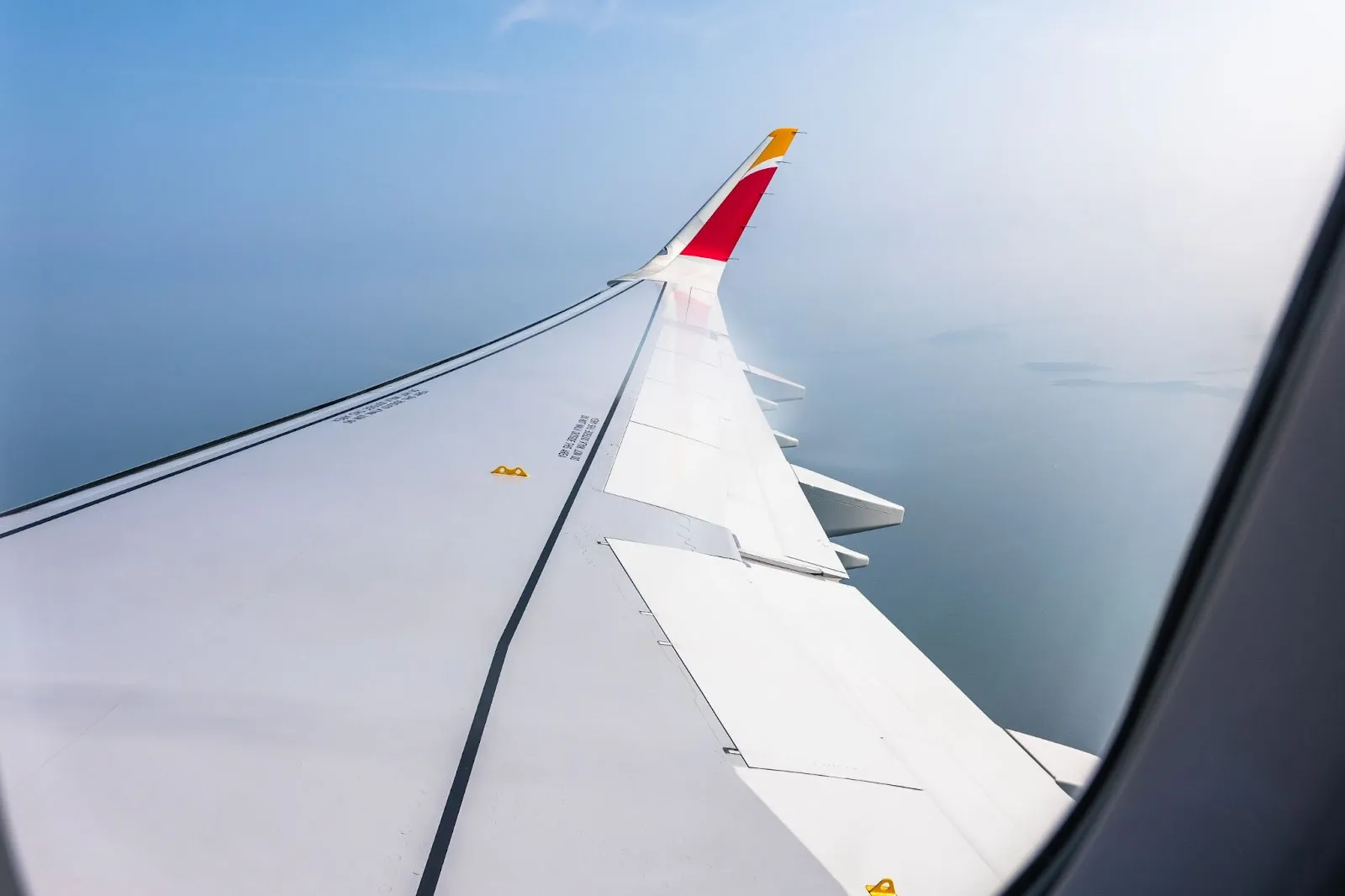
In-Flight Service
As usual, the service began with drinks, offering a selection of soft drinks, juices, and water. Complimentary alcoholic beverages were also available, including white wine, red wine, and beer. I opted for a refreshing lemonade and a glass of water.
The meal service arrived shortly after, offering a choice of either meat or vegetarian options. I chose the chicken ragout dish, which at first I had second thoughts about, but it was satisfactory. Alongside the main was a small salad, crackers, a raspberry and white chocolate cake and a bottle of water. As an extra, the crew handed out cookies, which I saved for later, given the lack of space on my tray table. Before wrapping up the service, the crew came for any final requests and offered us tea or coffee.
The size of the meal was somewhat smaller in comparison to other long-haul flights; however, for a short overnight flight, this was acceptable. One element I found welcome was the use of metal cutlery instead of wooden cutlery, which some other airlines opt for. This enhanced the economy experience, as it didn’t leave a woody aftertaste during each bite of the meal.
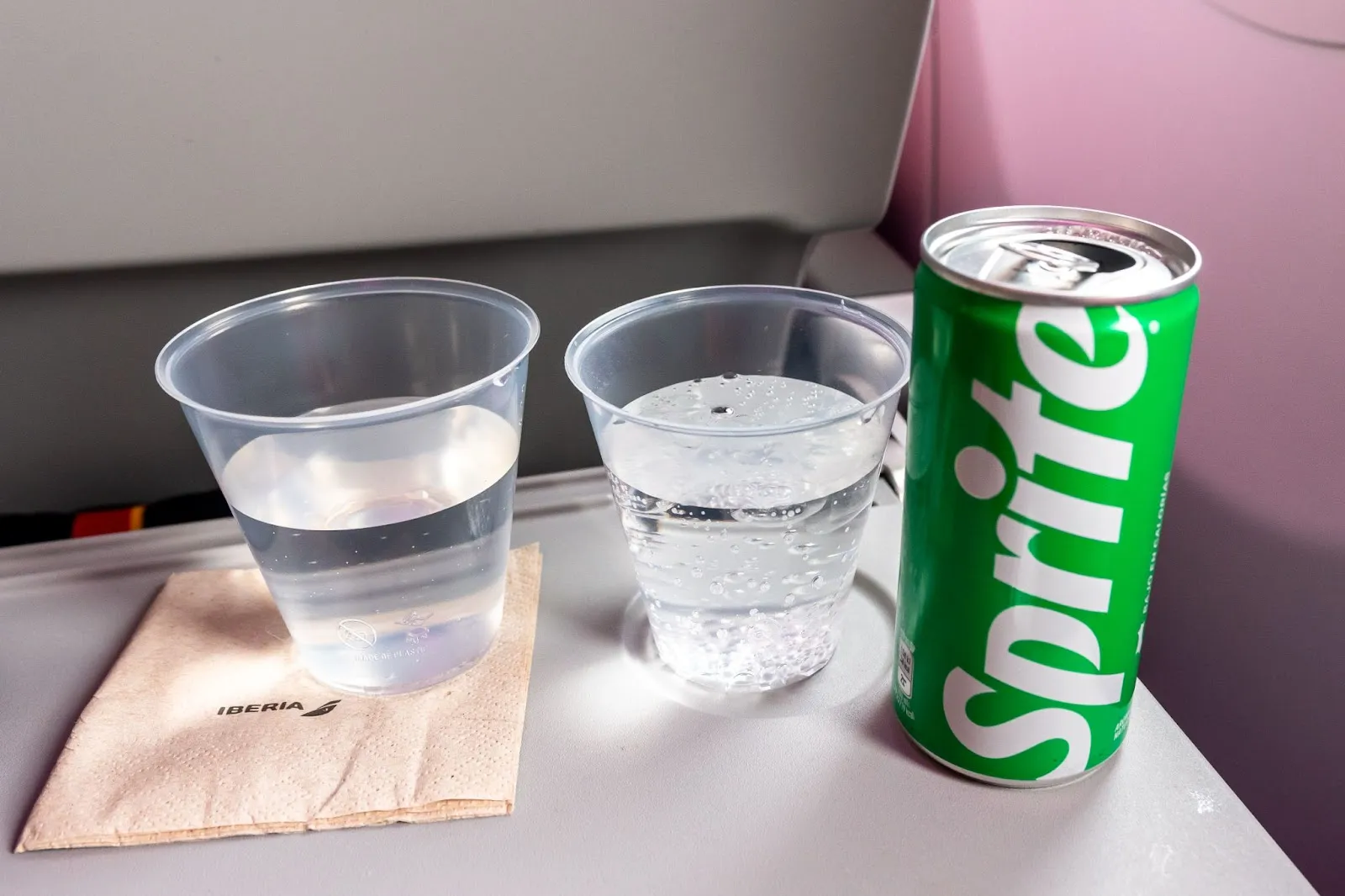
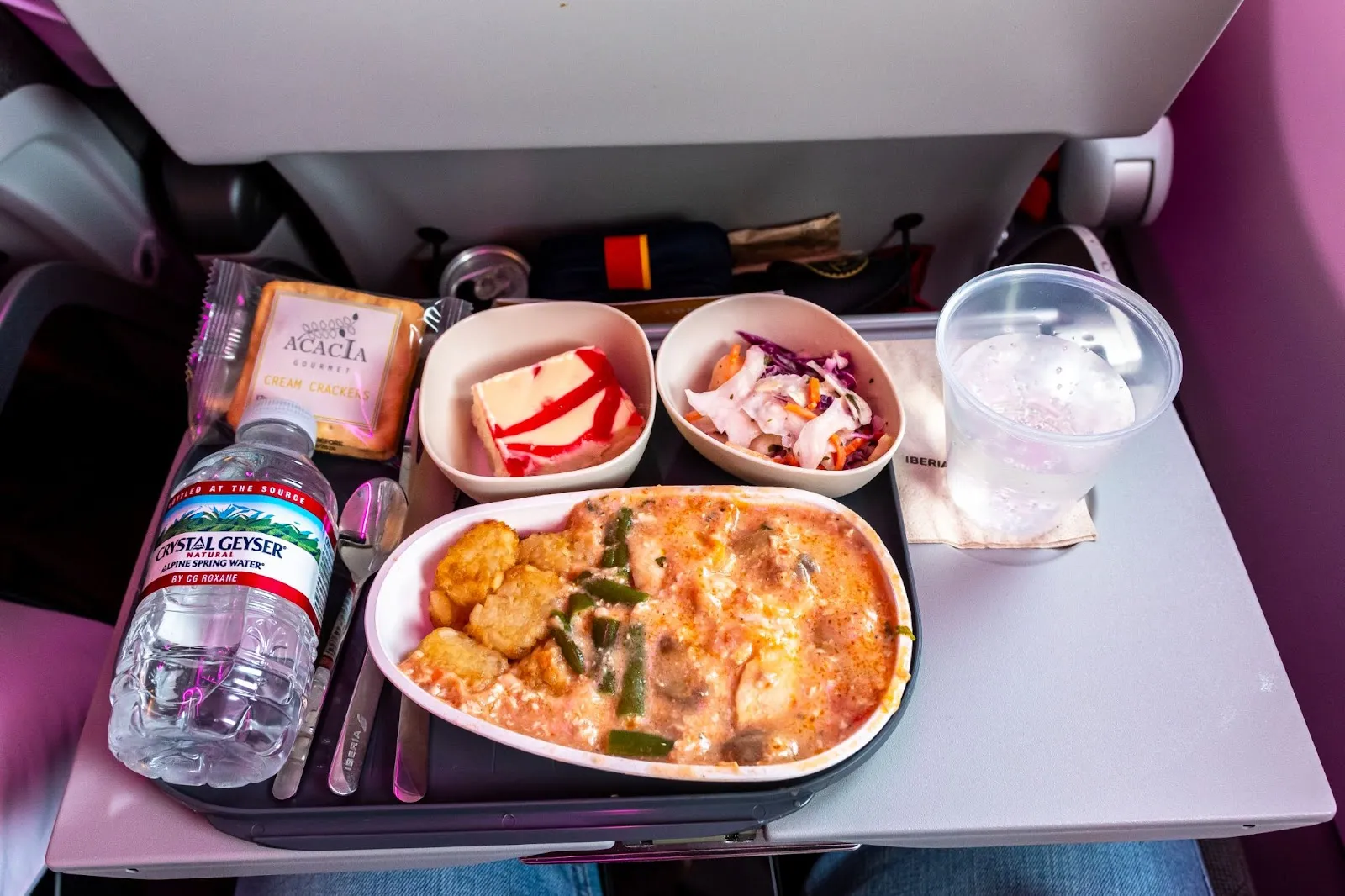
During Cruise
Following the in-flight service, I sat back and relaxed, enjoying the sunset at FL330 with the Earth’s shadow beautifully cast onto the atmosphere. Earlier on, I connected my headset to the IFE with ease and continued watching Moana 2, my choice of evening entertainment.
One element of the IFE I liked was the option to control your movie with the touch of a button below the screen. These controls included pausing and either rewinding or fast-forwarding 30 seconds. Other features found included volume buttons, a crew call button, an overhead light switch, and a power button. The WiFi symbol in the corner of the screen indicated strong connectivity, and it stayed on throughout the flight.
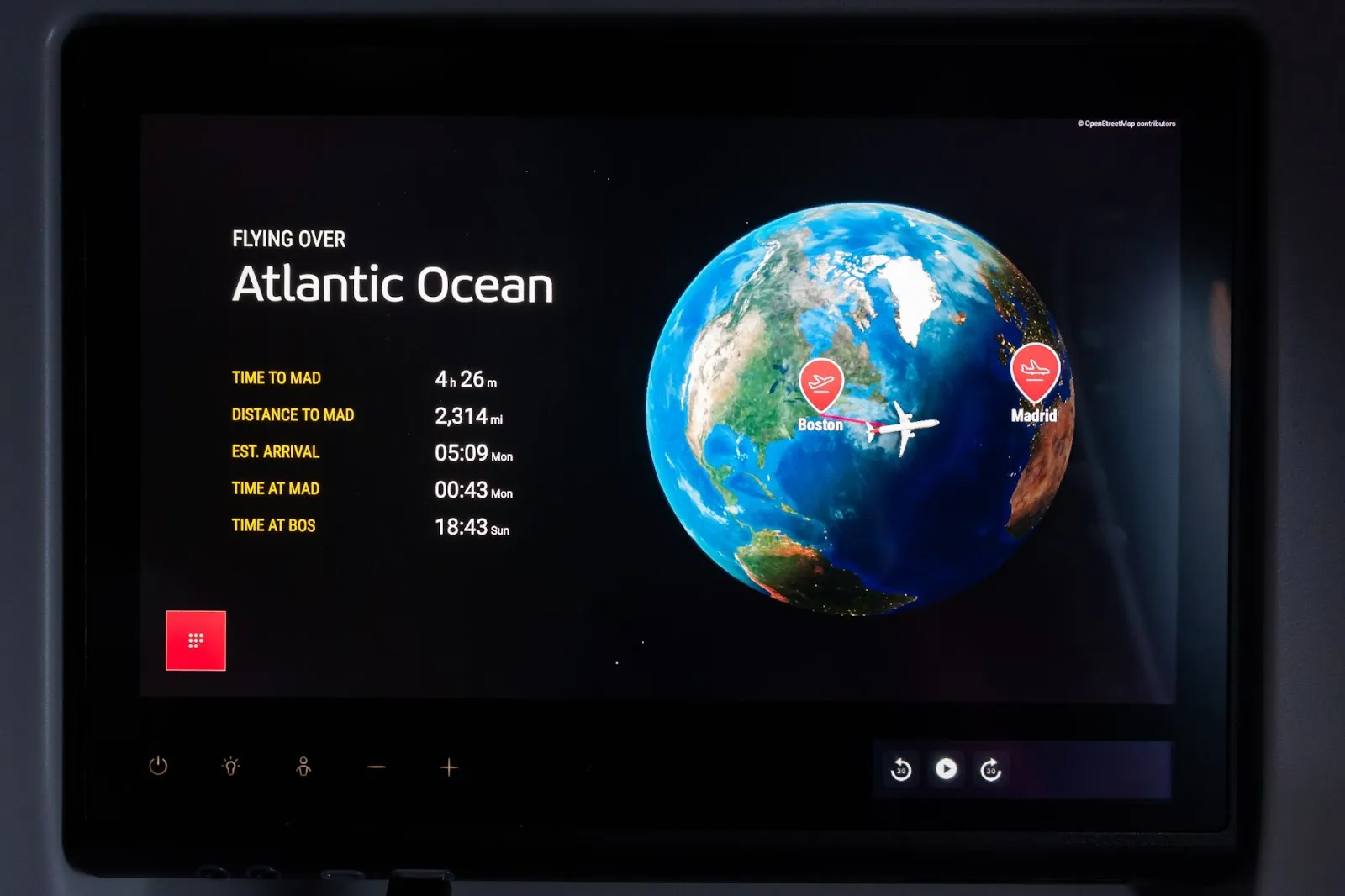
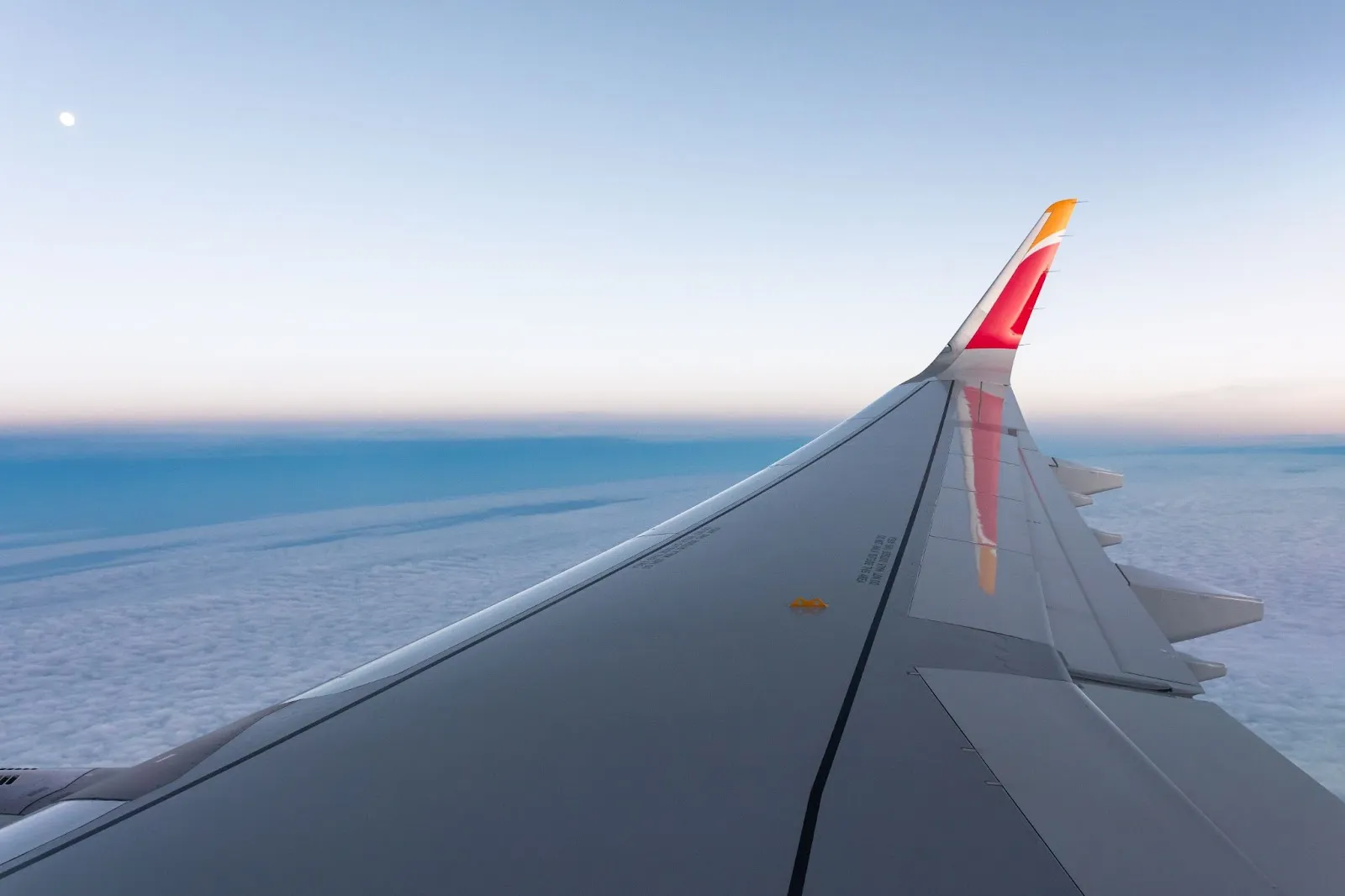
Airbus’ Space-Flex Galley
With around four hours of flight time remaining, I decided to visit the Space-Flex galley at the back of the aircraft. This is a rear galley and lavatory arrangement found on the Airbus A320 family, which IB have opted for on their XLRs to maximise seating capacity. Compromising between galley space and the facilities presents its challenges, including limited space for the crew to work.
Three of four lavatories are found here, with two adjacent to the galley. This somewhat creates a squeeze for the crew during meal preparation, while passengers crowd around to use the facilities. As the ratio of passengers to lavatories is relatively high, there would often be a queue behind.
A slight flaw for the single-aisle aircraft, as this slightly slows down the in-flight service; however, this is made up by the crew’s professionalism. An interesting remark the crew pointed out was that each lavatory handle has its unique design, with one cabin jump seat built into the door.
Through the night
While most of the cabin was either asleep or immersing themselves in Iberia’s IFE, I found myself chatting away to the crew. In the corner of the galley, bottles of water and cups were available for passengers to take, and I wondered where the snacks might be, if any.
The crew pulled out a tray containing sweet pastry snacks and biscuits, of which I took one of each. M&M's chocolate cookies, which the crew handed out during the meal service, were also available. Naturally, I took one, and I enjoyed a further late evening snack.
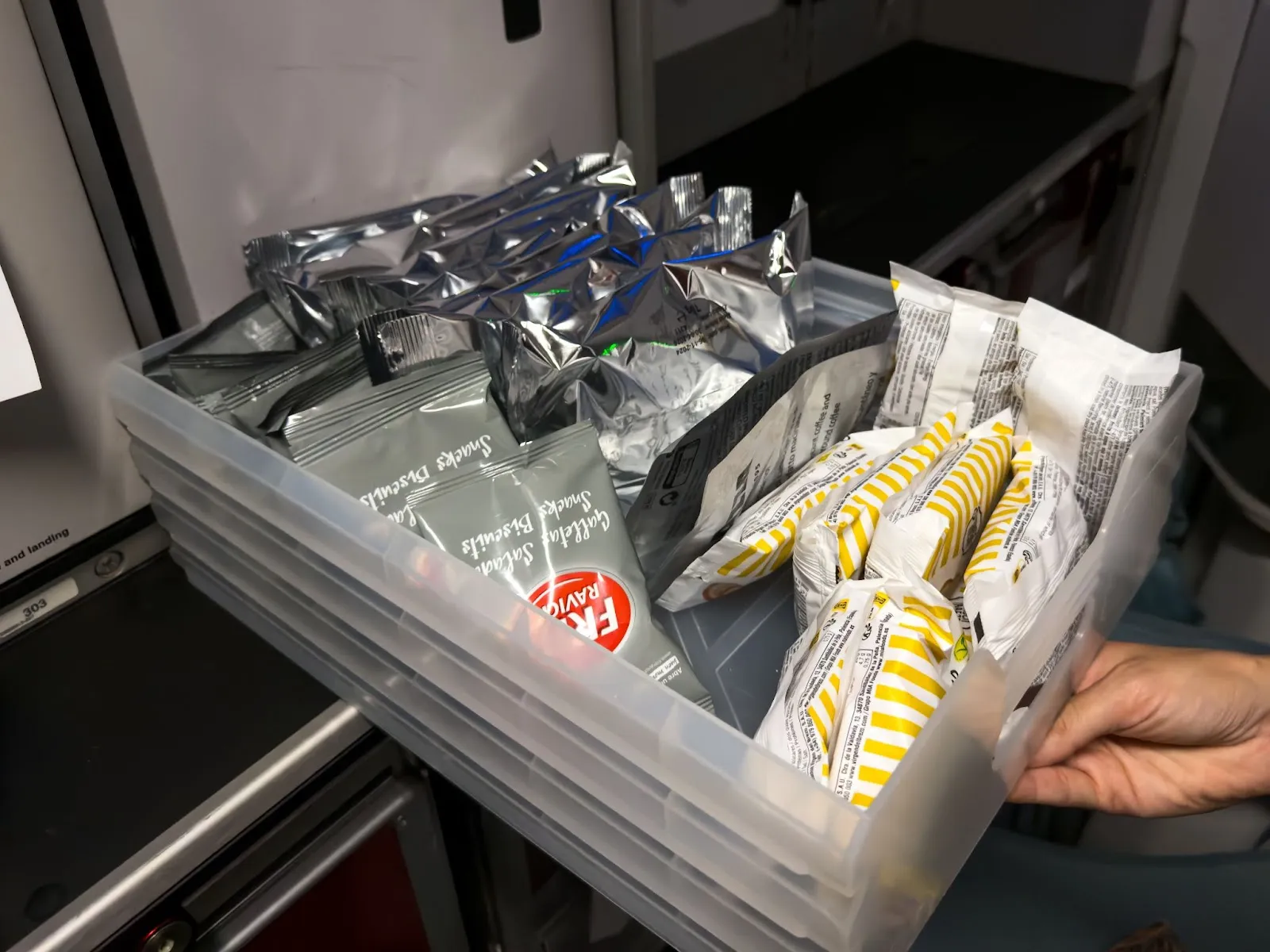
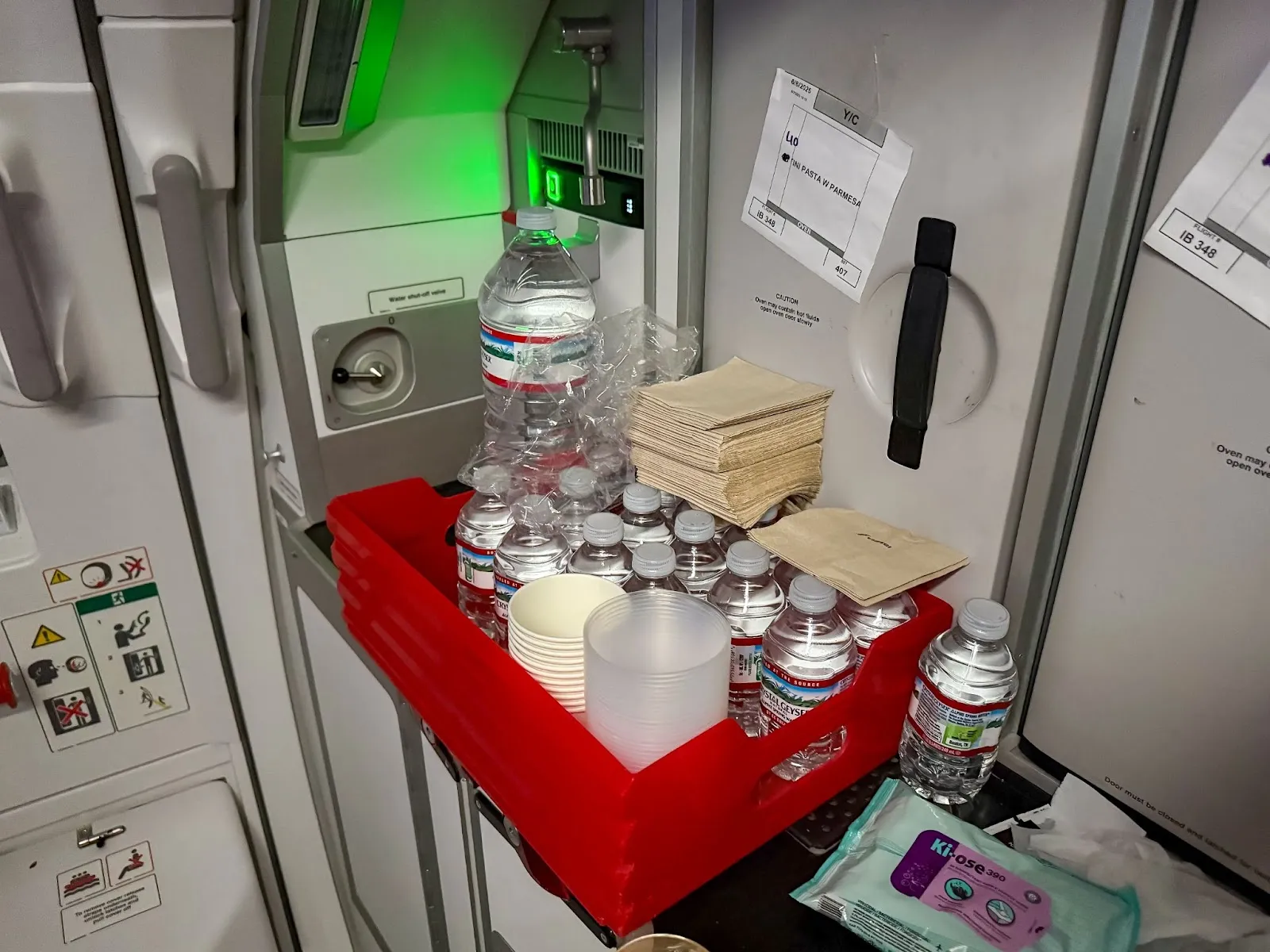
Almost an hour passed, and I was starting to feel the effects of flying through the night. Instead of walking back through the cabin and disturbing my neighbours to get to my seat, the crew kindly suggested I relax in the last row of the aircraft.
On longer flights, these would usually be crew rest seats; however, the quick 6-hour flight didn’t necessitate planned crew breaks.
Two Hours to Go
A solid 20 minutes of napping later and 2 hours until our arrival in Madrid, the second and final in-flight service started. I opted for a refreshing peppermint tea, just as I did on my inbound into Boston. Without having a choice, the crew handed out roast beef and mozzarella sandwiches, with Kit Kats alongside. As far as pre-landing snacks went, this tasted good, and I could have easily had another. Having had a look at the online menu, a pepper and spinach sandwich should also have been available.
For the remainder of the flight, I had the pilot’s HUD displayed on the IFE. Given that it was still very early hours and dark outside, this was a nice feature to have on the screen.
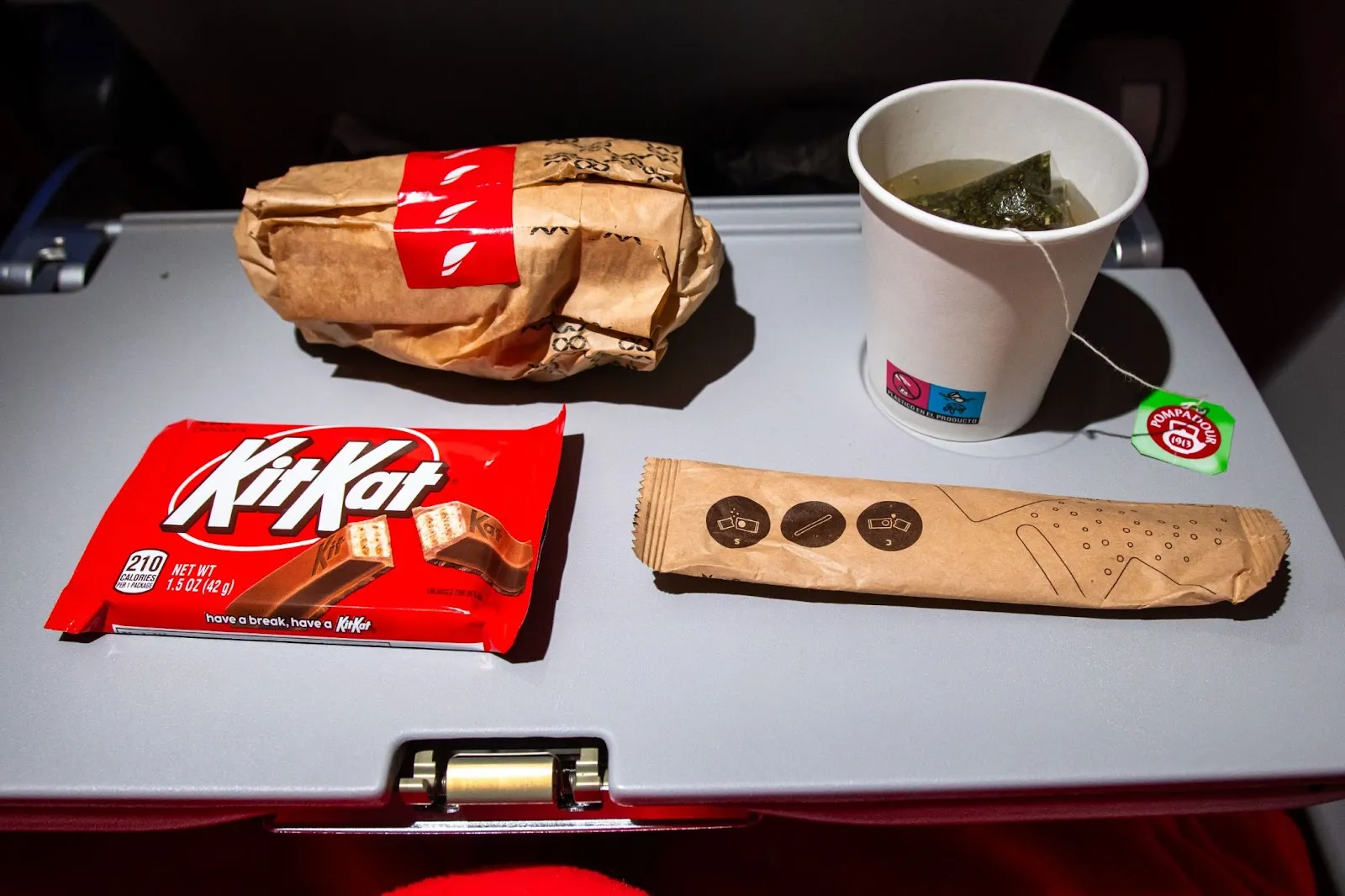
Arrival
At exactly 30 minutes ahead of schedule, we touched down on Madrid’s 32R at 5.10 am, arriving on stand moments after. Iberia’s stunning purple mood lighting lit up the cabin, and we started to slowly disembark the XLR.
Twice in as many flights into MAD, we had a remote stand, a downside if you might be planning a flight deck visit, as time would be limited. For an avgeek though, there is surely nothing better than being seeing your aircraft up close on the ramp. Naturally, I visited the flight deck (briefly) to give my appreciation to the crew and quick thoughts about my experiences on the XLR.
I headed out through door L1 into the fresh morning air, having one final look at the world’s newest single-aisle aircraft that flew us across the Atlantic Ocean.
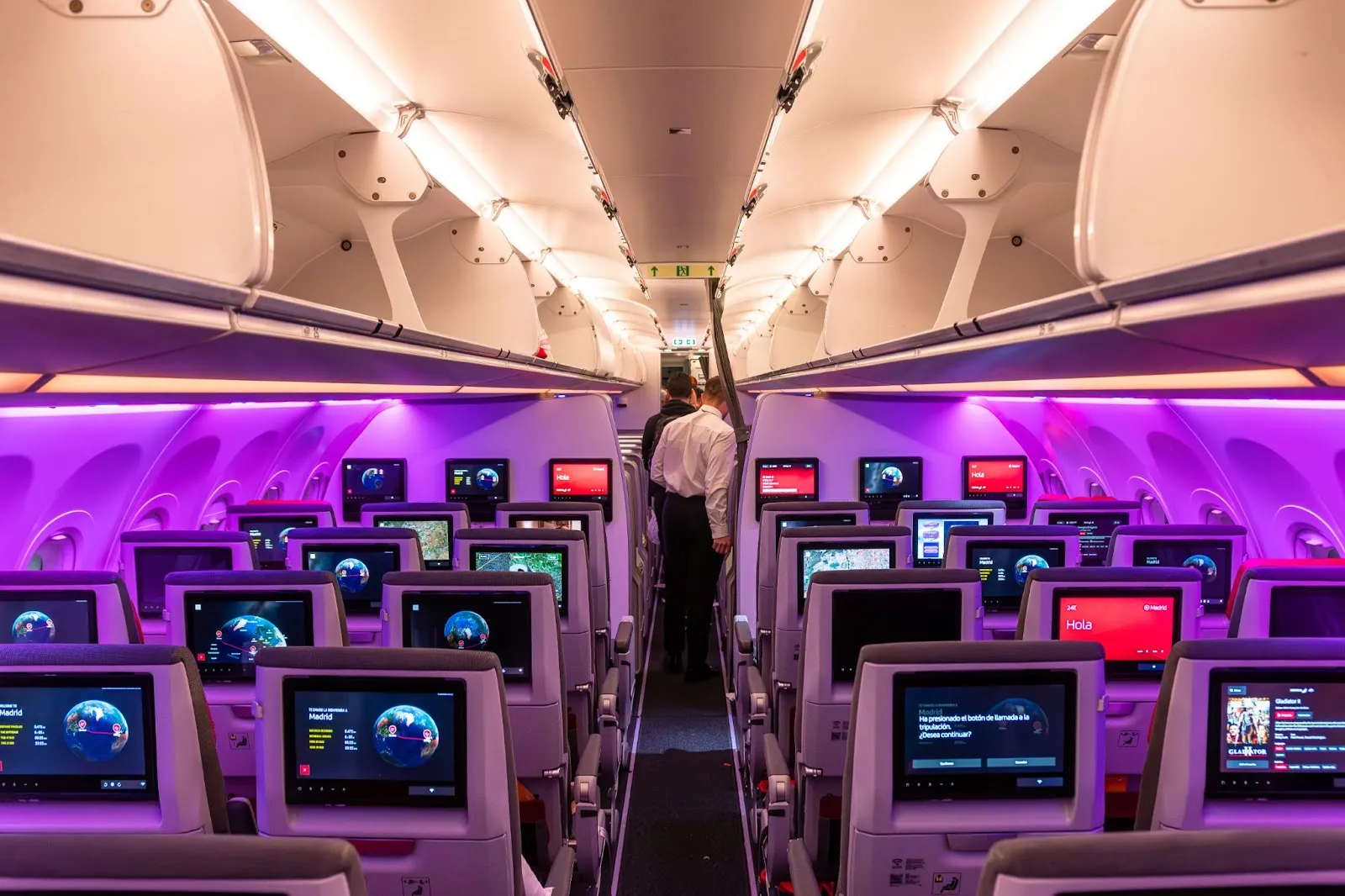
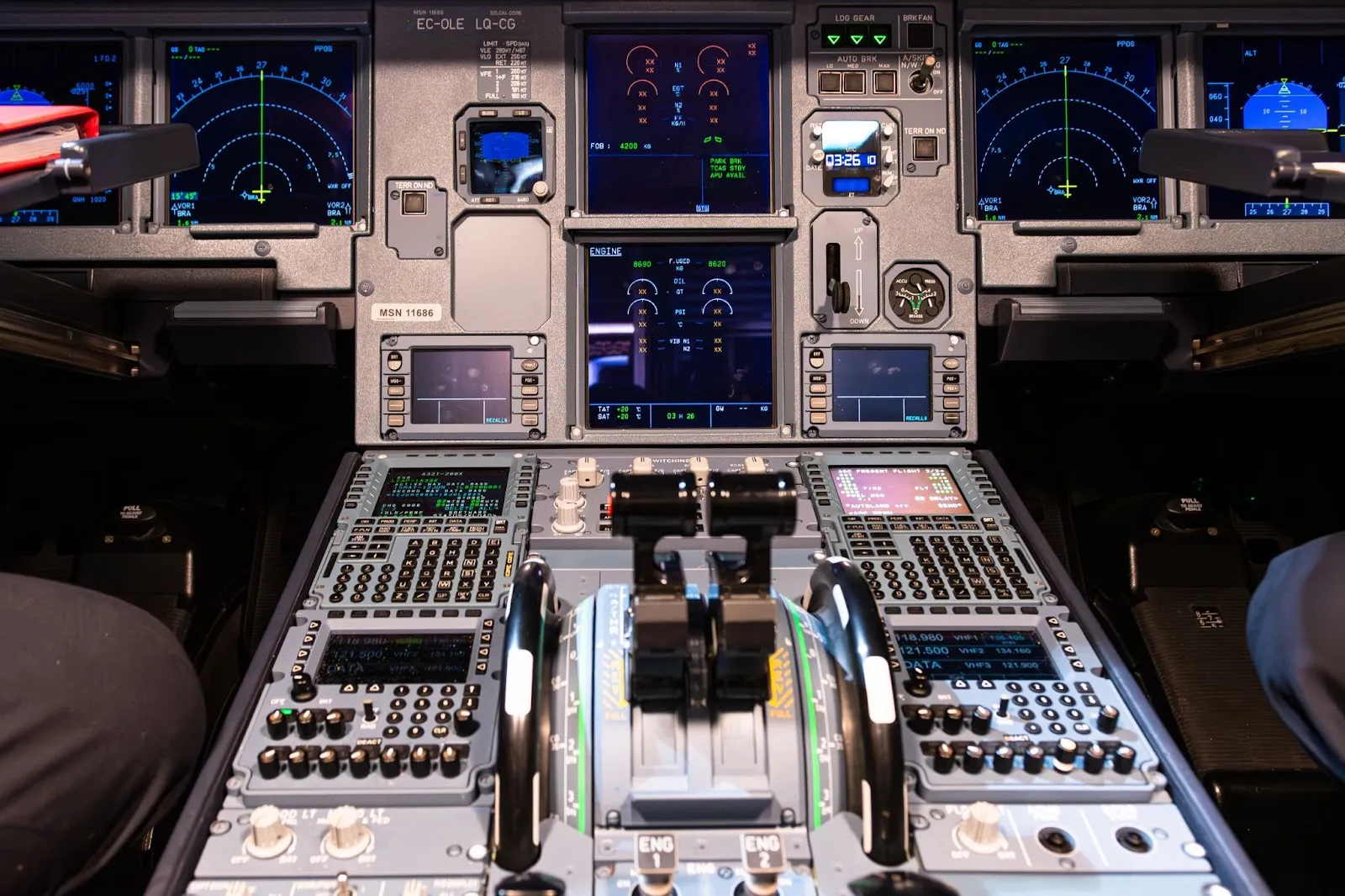
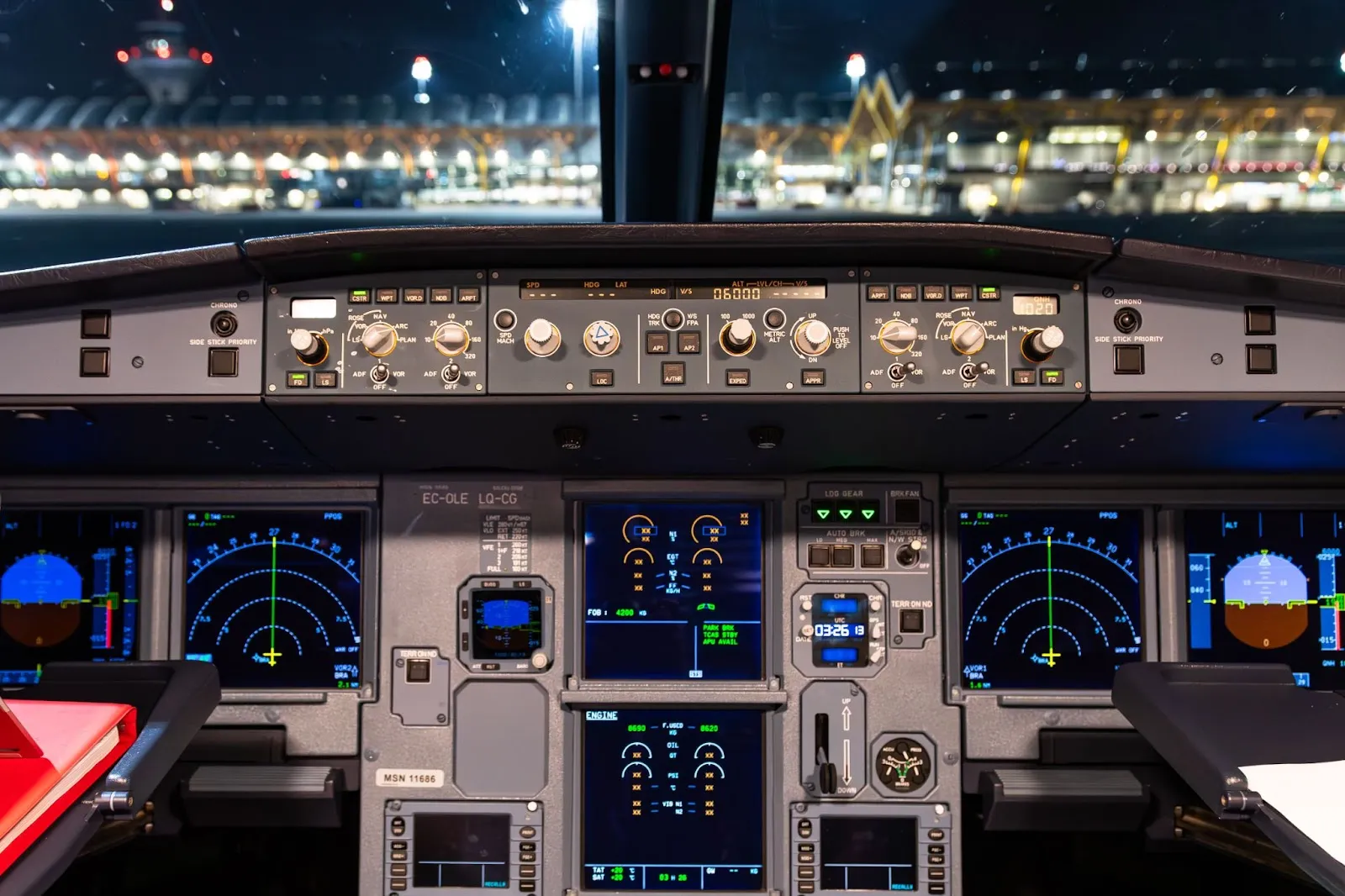
Conclusions
The next-generation A321XLR is a refreshing addition to your usual wide-body aircraft on long-haul flights. It seemed slightly strange at first flying long haul on a single-aisle aircraft, but I quickly settled onboard and enjoyed the journey throughout.
A relaxed atmosphere was provided by the upgraded Airspace cabin, with comfortable seating, high-quality IFE, unique ambient mood lighting, and great connectivity services. As usual, the Iberia crew demonstrated professionalism in their service, which enhanced the overall experience.
The catering situation may not have been as strong compared to the inbound flight, but it was acceptable, given the timing and length of our journey. Flying onboard Iberia’s flagship A321XLR was a pleasure, and I would fly this aircraft long-haul again.
Upcoming deliveries of the XLR to Iberia not only reinforce the airline's strong widebody fleet but also lead to a more efficient and sustainable future. The incorporation of new destinations adds to IB’s growing network, increasing the capacity of existing routes and connecting Spain to the world.
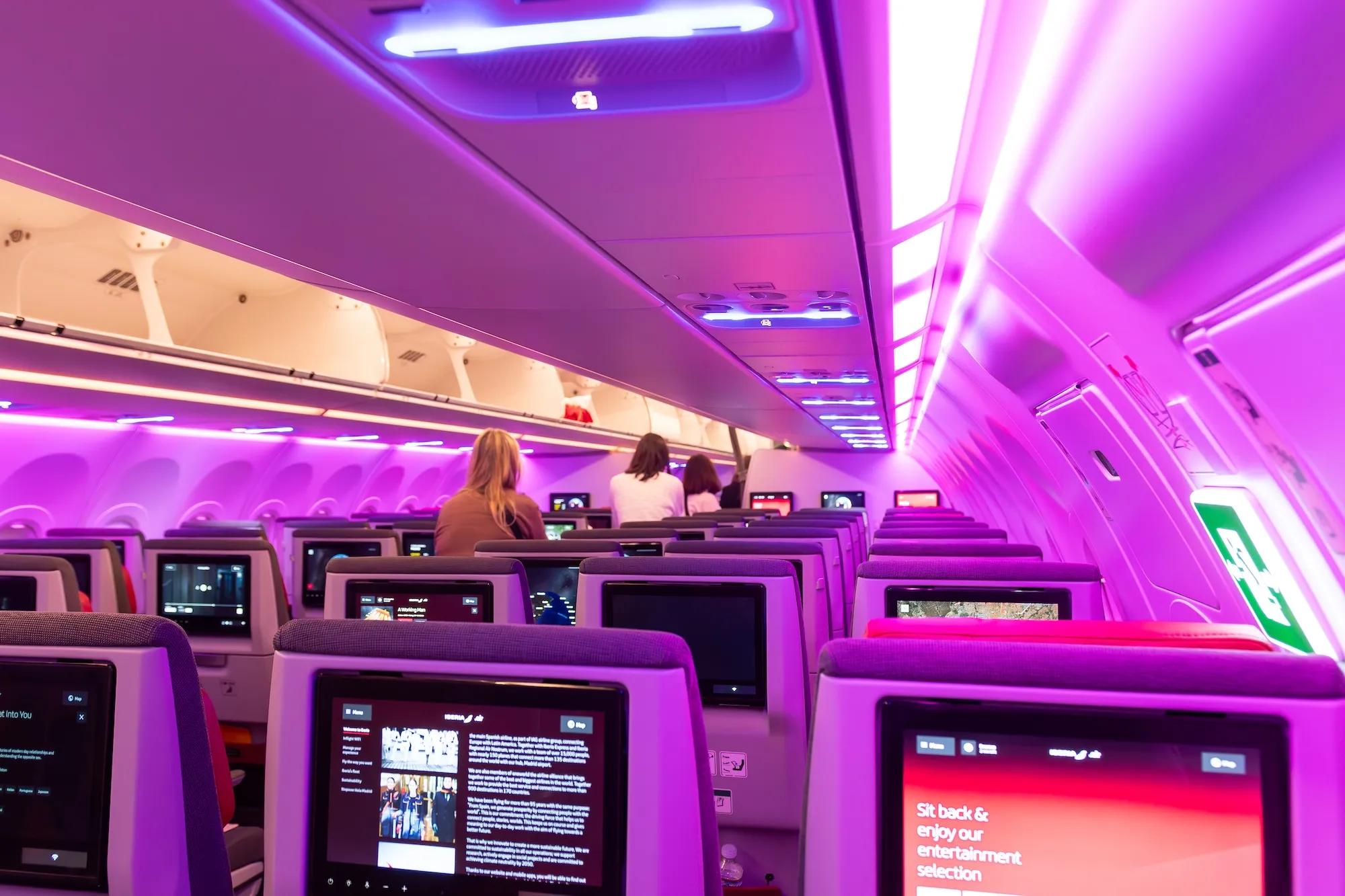

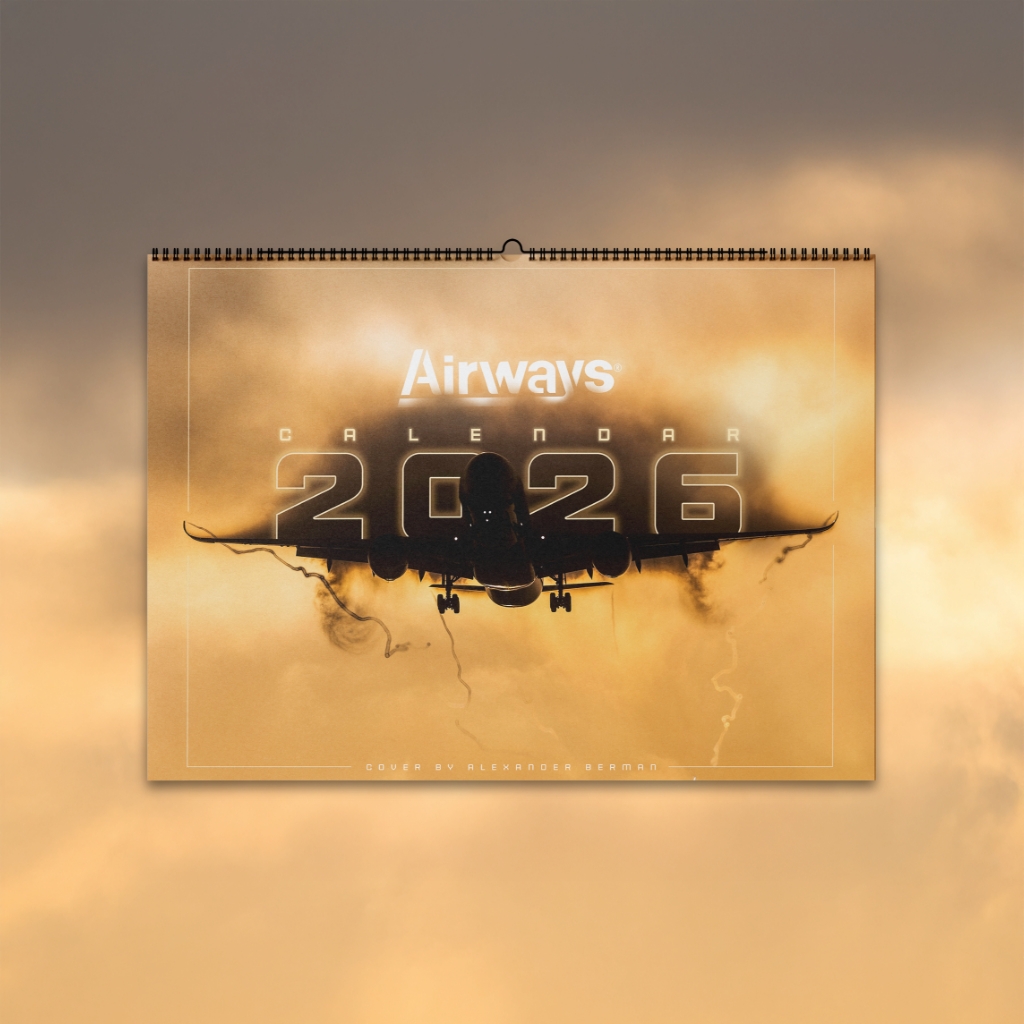
.webp)
